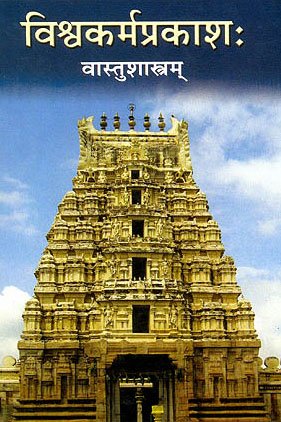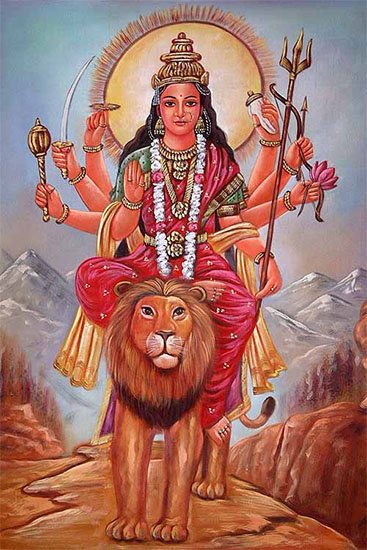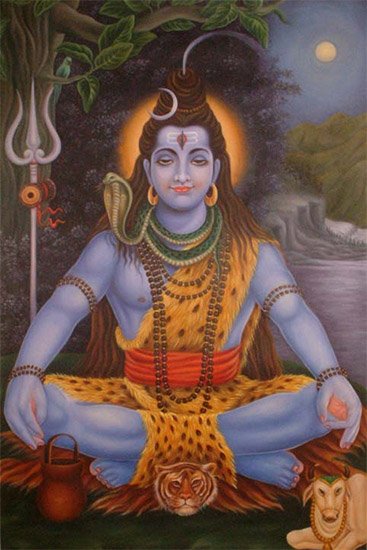Astramantra, Astra-mantra: 8 definitions
Introduction:
Astramantra means something in Hinduism, Sanskrit. If you want to know the exact meaning, history, etymology or English translation of this term then check out the descriptions on this page. Add your comment or reference to a book if you want to contribute to this summary article.
In Hinduism
Vastushastra (architecture)
Source: Google Books: Temple Consecration Rituals in Ancient IndiaAstramantra (अस्त्रमन्त्र, “weapon-mantra”): One of the five aṅgamantras (see Kāśyapaśilpa prathameṣṭakā 43c-44a) usually identified as phaṭ or as a formula containing phaṭ.

Vastushastra (वास्तुशास्त्र, vāstuśāstra) refers to the ancient Indian science (shastra) of architecture (vastu), dealing with topics such architecture, sculpture, town-building, fort building and various other constructions. Vastu also deals with the philosophy of the architectural relation with the cosmic universe.
Pancaratra (worship of Nārāyaṇa)
Source: archive.org: Isvara Samhita Vol 5Astramantra (अस्त्रमन्त्र) is the name of a mantra to be uttered during certain preparations of śuddhānna, according in verse 25.94-107a of the 8th-century Īśvarasaṃhitā. Accordingly, “... they (vessels) are to be washed without (outside) with water sanctified by astramantra and are to be rotated with pure cloth consecrated, by it (astramantra)”.
Source: Shodhganga: Kasyapa Samhita—Text on Visha Chikitsa (p)Astramantra (अस्त्रमन्त्र) is the name of an Aṅga-Mantra performed along with touching the respective place in one’s body, according to the Kāśyapa Saṃhitā: an ancient Sanskrit text from the Pāñcarātra tradition dealing with both Tantra and Viṣacikitsā (Toxicology).—The Astramantra is as follows: apratihataśāsana varma phaṭ svāhā.

Pancaratra (पाञ्चरात्र, pāñcarātra) represents a tradition of Hinduism where Narayana is revered and worshipped. Closeley related to Vaishnavism, the Pancaratra literature includes various Agamas and tantras incorporating many Vaishnava philosophies.
Shaktism (Shakta philosophy)
Source: Google Books: Consecration Rituals in South Asia (Shaktism)Astramantra (अस्त्रमन्त्र) refers to a particular type of Mantra used for sprinkling the pit, according to the Ratnanyāsa Ritual as Described in the Devyāmata (Cf. Dīptāgama verse 20.244).—Accordingly, [synopsis of verses 1-5]—“Offering of water from the water-vessel; purification of the ‘jewel-cavities’ by sprinkling the pit with the astramantra and ‘Śiva-water’ (śivavāri); covering the pit and the surface of the brahmaśilā with cloth; placing the darbha-grass on [or around] the pit; anointing the pit and the brahmaśilā with sandal-paste 5. Having offered incense, the Ācārya accompanied by the mūrtipās should begin the ratnanyāsa by depositing a handful of gold. [...]”.

Shakta (शाक्त, śākta) or Shaktism (śāktism) represents a tradition of Hinduism where the Goddess (Devi) is revered and worshipped. Shakta literature includes a range of scriptures, including various Agamas and Tantras, although its roots may be traced back to the Vedas.
Shaivism (Shaiva philosophy)
Source: SOAS University of London: Protective Rites in the Netra TantraAstramantra (अस्त्रमन्त्र) is the name of a Mantra, according to the Netratantra of Kṣemarāja: a Śaiva text from the 9th century in which Śiva (Bhairava) teaches Pārvatī topics such as metaphysics, cosmology, and soteriology.—Accordingly, [verse 2.28cd-33]—“Now, I shall explain the limbs of the mantra, with which, tied together, he achieves perfection. [...] The netra [aṅgamantra], [which is] most powerful and destroys all faults, begins with Bhairava [j], and an oṃ [and] situated with a head always in motion [y]. That astramantra is proclaimed ajīvaka [pha] [e.g., ajīvakaṭasaṃyuktam astram] joined with ṭa. The six aṅgas of the mantrarāṭ [i.e., the mṛtyuñjayamantra], which confers siddhis, is declared”.

Shaiva (शैव, śaiva) or Shaivism (śaivism) represents a tradition of Hinduism worshiping Shiva as the supreme being. Closely related to Shaktism, Shaiva literature includes a range of scriptures, including Tantras, while the root of this tradition may be traced back to the ancient Vedas.
Languages of India and abroad
Sanskrit dictionary
Source: DDSA: The practical Sanskrit-English dictionaryAstramantra (अस्त्रमन्त्र).—a Mantra to be repeated in discharging or withdrawing a missile; संमोहनं नाम सखे ममास्त्रं प्रयोग- संहारविभक्तमन्त्रम् (saṃmohanaṃ nāma sakhe mamāstraṃ prayoga- saṃhāravibhaktamantram) R.5.57,59.
Derivable forms: astramantraḥ (अस्त्रमन्त्रः).
Astramantra is a Sanskrit compound consisting of the terms astra and mantra (मन्त्र).
Source: Cologne Digital Sanskrit Dictionaries: Monier-Williams Sanskrit-English DictionaryAstramantra (अस्त्रमन्त्र):—[=astra-mantra] [from astra] m. a Mantra used to charm arrows, [Raghuvaṃśa v, 59.]
[Sanskrit to German]
Sanskrit, also spelled संस्कृतम् (saṃskṛtam), is an ancient language of India commonly seen as the grandmother of the Indo-European language family (even English!). Closely allied with Prakrit and Pali, Sanskrit is more exhaustive in both grammar and terms and has the most extensive collection of literature in the world, greatly surpassing its sister-languages Greek and Latin.
See also (Relevant definitions)
Partial matches: Mantra, Astra.
Full-text (+22): Astiramantiram, Astra, Pashaccheda, Ullekhana, Digbandhanamantra, Daha, Digbandhana, Cheda, Mritika, Bhoktritva, Ratnarandhra, Bhoktri, Mantraraj, Siddhida, Kilvisha, Ratnadhara, Shivavari, Argha, Vishlesha, Asesa.
Relevant text
Search found 9 books and stories containing Astramantra, Astra-mantra; (plurals include: Astramantras, mantras). You can also click to the full overview containing English textual excerpts. Below are direct links for the most relevant articles:
Expiatory Rites in Keralite Tantra (by T. S. Syamkumar)
1.7. Expiatory Rites in Ājitāgama and Dīptāgama < [Chapter 2 - Expiatory Rites in Āgamic Literature]
1.6. Expiatory Rites in Rauravottarāgama < [Chapter 2 - Expiatory Rites in Āgamic Literature]
2. Expiatory Rites in Tantrasamuccaya < [Chapter 3 - Expiatory Rites in Kerala Tantric Ritual Manuals]
The Linga Purana (by J. L. Shastri)
Chapter 24 - The mode of worship of Śiva (Continued) < [Section 2 - Pūrvabhāga]
Chapter 25 - The holy rites of fire pertaining to Śiva < [Section 2 - Pūrvabhāga]
Chapter 22 - The consecration of the Tattvas < [Section 2 - Pūrvabhāga]
The Shiva Purana (by J. L. Shastri)
Chapter 20 - Rules for hair-cutting and ablution < [Section 6 - Kailāsa-saṃhitā]
Chapter 22 - The compulsory and optional rites of Śaivite Scriptures < [Section 7.2 - Vāyavīya-saṃhitā (2)]
Chapter 19 - The rules of Yogapaṭṭa < [Section 6 - Kailāsa-saṃhitā]
Puranic encyclopaedia (by Vettam Mani)
The Agni Purana (by N. Gangadharan)
Chapter 317 - The different kinds of mantras of Śiva
Chapter 72 - Mode of bathing and daily worship (snāna-viśeṣa)
Chapter 75 - Mode of installation of the fire (agni-sthāpana)
The Skanda Purana (by G. V. Tagare)
Chapter 17 - Procedure of Worship (of the Sun-God) < [Section 1 - Prabhāsa-kṣetra-māhātmya]
Chapter 23 - Installation of Someśvara (Soma-īśvara) < [Section 1 - Prabhāsa-kṣetra-māhātmya]
Chapter 65 - Manifestation of Parāśareśvarādi Liṅgas < [Section 2 - Uttarārdha]